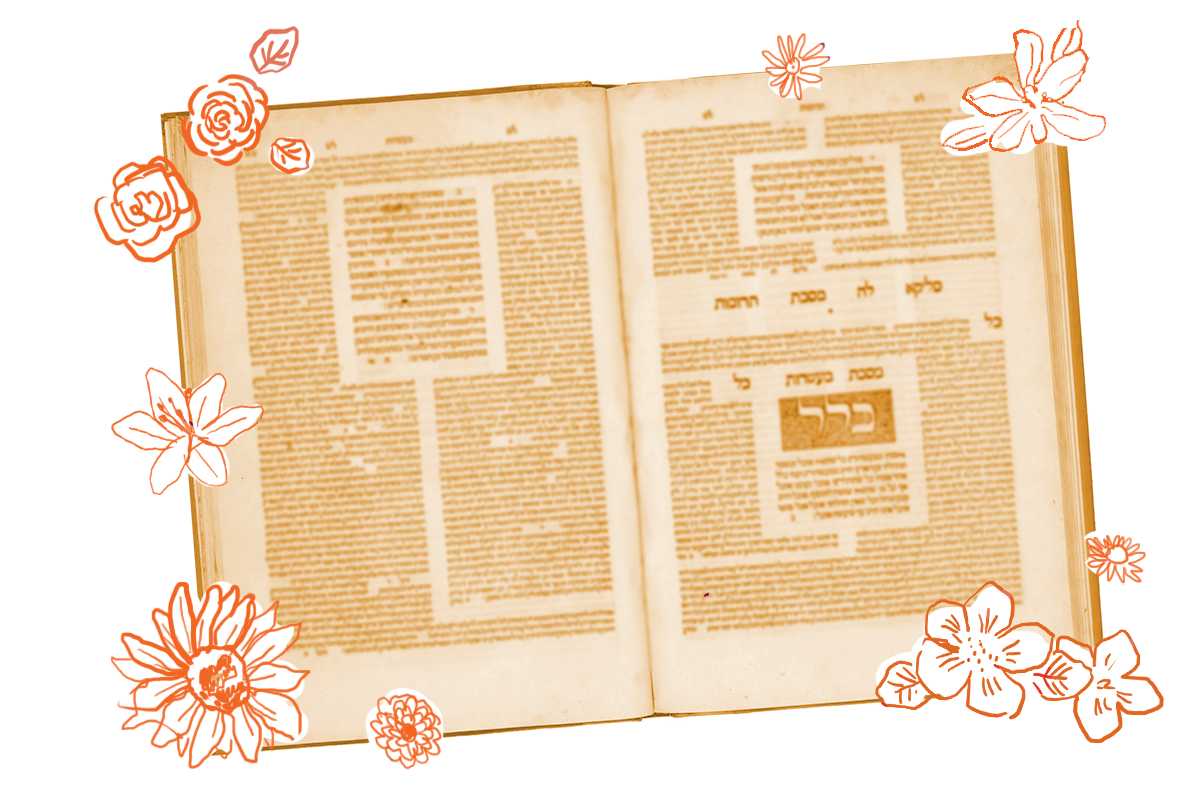Today’s daf continues a discussion that we started yesterday about whether the biblical mitzvah of yibbum (marrying the widow of a brother who has died childless) overrides the biblical prohibition against marrying one’s wife’s sister. In other words: If two sisters married two brothers, and then one brother died childless, is the remaining brother obligated to take his wife’s sister — the widow of his brother — as a second wife?
The Gemara frames this question more generally: Can a positive biblical mitzvah override a biblical prohibition?
To explore this question, the rabbis turn to an exegetical principle that they call smuchim, juxtaposition. This type of interpretation assumes that if two biblical verses that seem to have nothing to do with each other appear one after the other in the Torah, they are meant to inform each other.
The Gemara gives us an example of how this works, using an example from Deuteronomy: “You shall not wear diverse kinds of wool and linen together. You shall make for yourself twisted fringes.” (Deuteronomy 22:11–12)
The Torah states the prohibition of shatnez (wearing cloth that combines wool and linen together), and then immediately after gives us the positive mitzvah of tzitzit. The Gemara on today’s daf explains that this juxtaposition is meant to teach us that the positive mitzvah of tzitzit overrides the negative prohibition of shatnez — you can in fact wear wool fringes on a linen garment to fulfill the mitzvah of tzitzit.
That’s a bold statement. After all, the Torah explicitly prohibits wearing wool and linen blends. So how can the rabbis allow it in the case of tzitzit? Where do they get the authority to use this method of interpretation?
Rabbi Elazar said: From where is juxtaposition? As it is stated: “The works of His hands in truth and justice, all His commandments are sure. Juxtaposed forever and ever, made in truth and uprightness.” (Psalms 111:7–8)
As Rabbi Elazar notes, Psalm 111 states that God’s works are smuchim for all eternity, made in justice and righteousness. The word smuchim, as we noted above, does mean juxtaposed — though in this context might more literally be read as “established.” Rabbi Elazar’s midrashic interpretation of this verse grounds the practice of deriving meaning from adjacent verses to reveal new divinely ordained truths about each — including cases when a biblical positive mitzvah can indeed override a biblical prohibition.
Do all the rabbis agree on the use of smuchim? Of course not! At least, not in all cases:
Rav Yosef said: Even according to the one who does not generally derive interpretations from juxtaposed verses, nevertheless, he does derive them from Deuteronomy, as Rabbi Yehuda does not generally derive homiletic interpretations from juxtaposed verses, and yet he does derive them from Deuteronomy.
Apparently, Rabbi Yehuda did not think it was appropriate to use the principle of juxtaposition on biblical verses — except for verses from Deuteronomy. The Gemara then cites two examples of Rabbi Yehuda’s rulings: one which rejects the principle of juxtaposition in verses from Leviticus, and one which accepts it in verses from Deuteronomy. The rest of today’s daf examines Rabbi Yehuda’s argument in more depth, looking at verses from Deuteronomy to understand how and why Rabbi Yehuda might have thought we actually could learn from the principle of juxtaposition — especially if it means that a biblical mitzvah might override a biblical prohibition.
So does the biblical mitzvah of yibbum override the biblical prohibition against marrying one’s wife’s sister? Stay tuned.
Read all of Yevamot 4 on Sefaria.
This piece originally appeared in a My Jewish Learning Daf Yomi email newsletter sent on March 11th, 2022. If you are interested in receiving the newsletter, sign up here.



